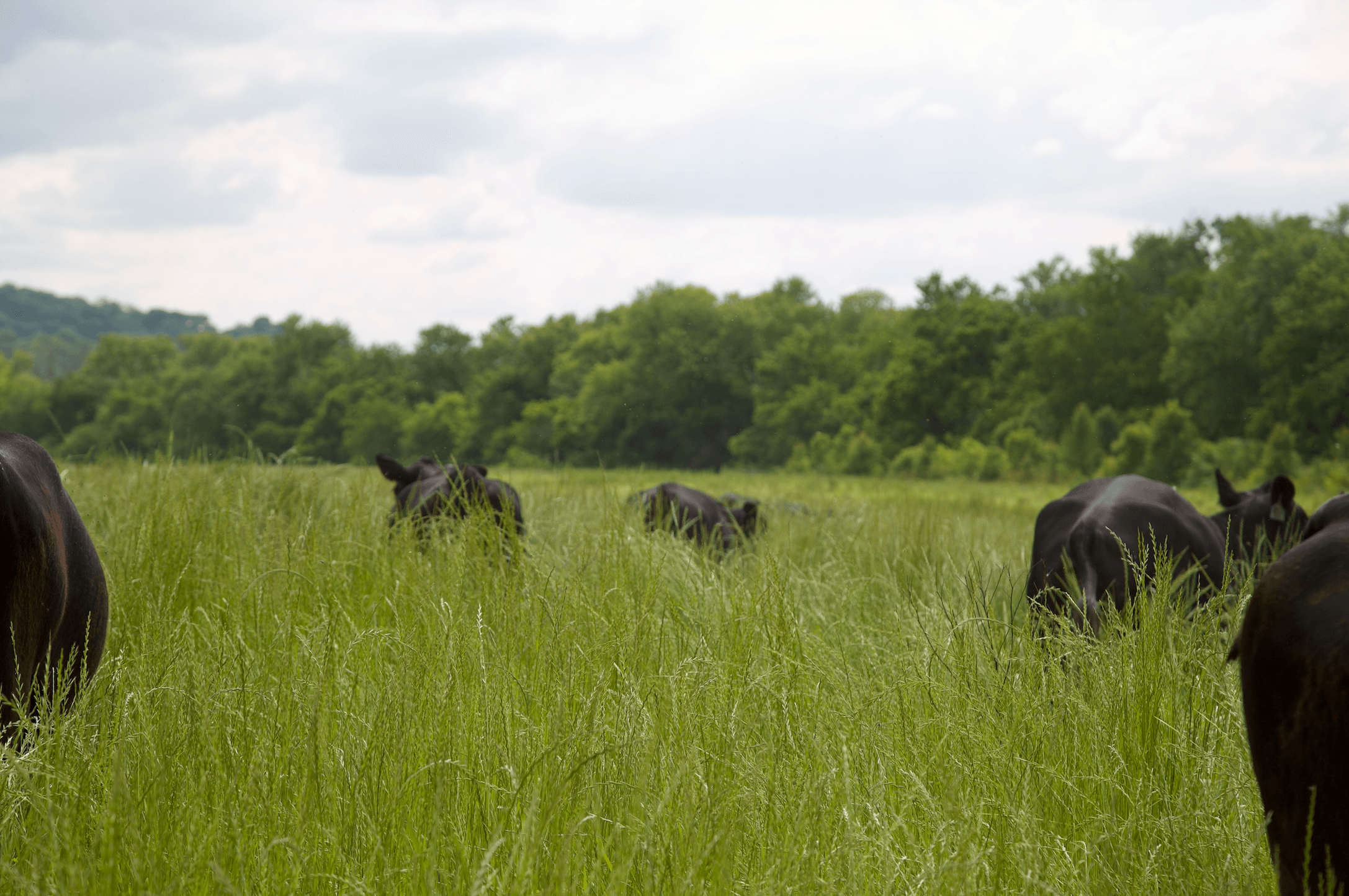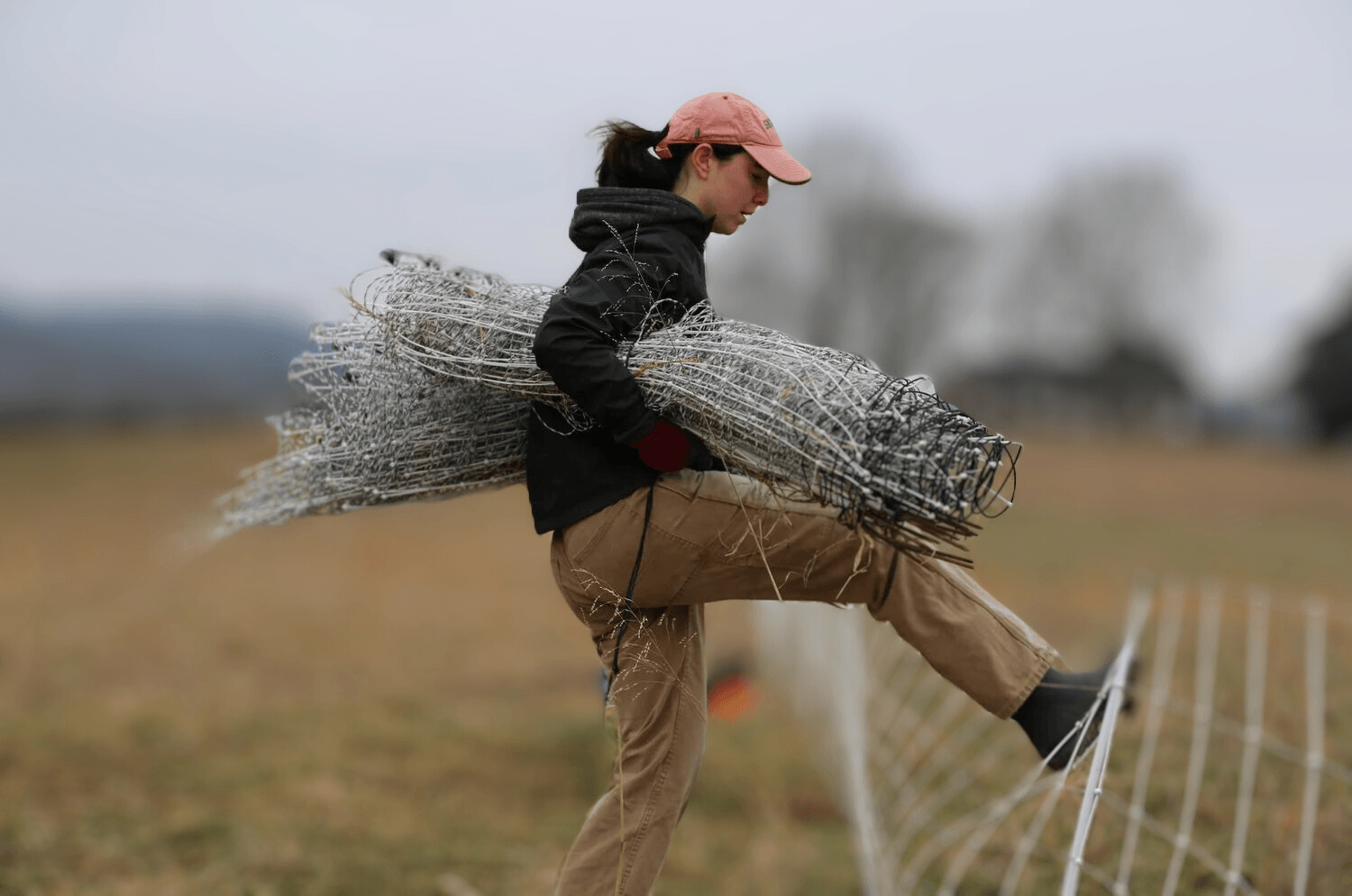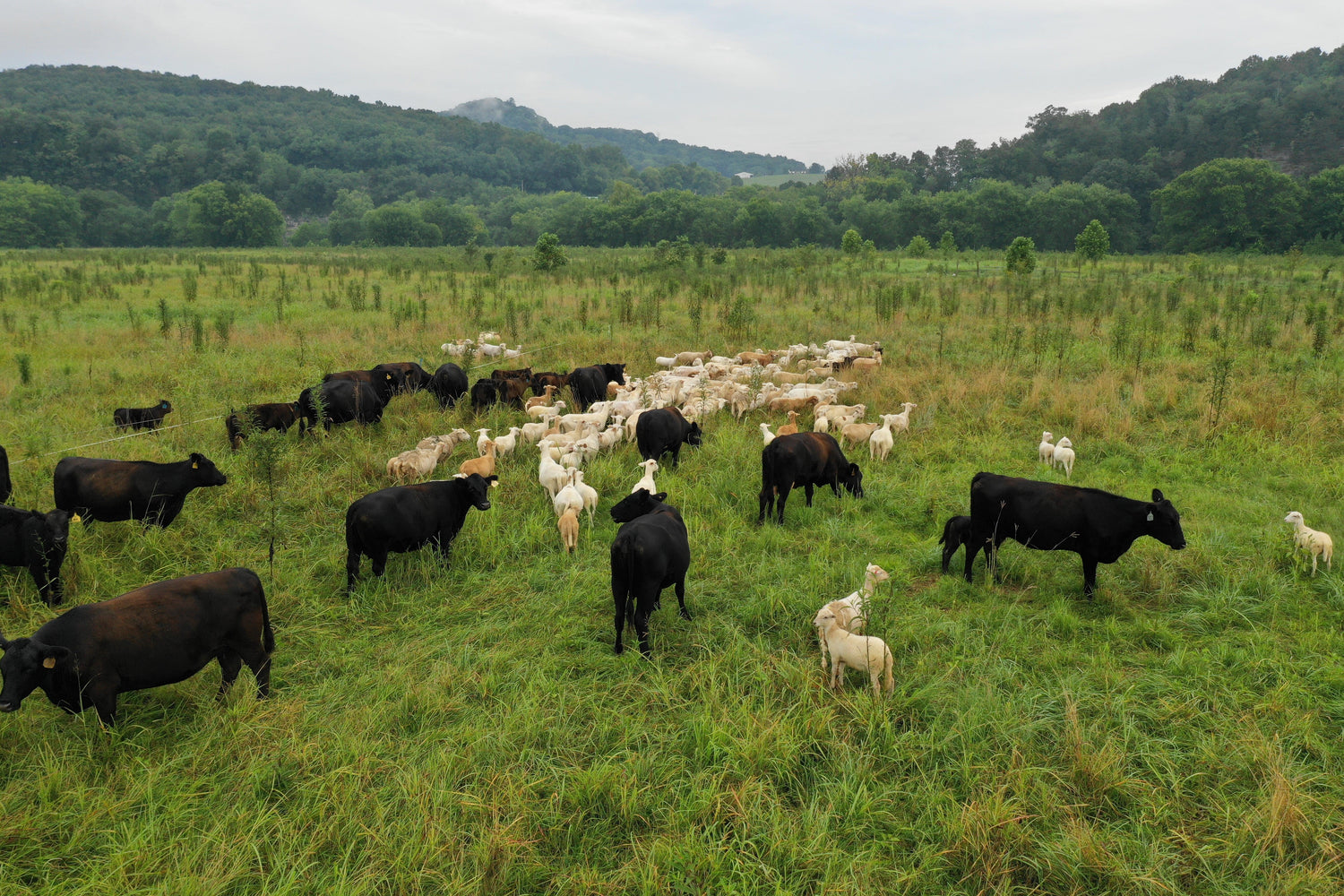Grasslands
Grasslands are the heartbeat of our farm. Planned grazing and regenerative land management practices foster a thriving farm system



Planned Rotational Grazing
Planned rotational grazing is a regenerative farming practice designed to mimic nature’s complex processes. By orchestrating the movement of livestock across our farm’s landscapes, we emulate the historic patterns of large herbivore herds that once roamed freely. By preventing overgrazing in specific zones, the land has an opportunity to regenerate, fostering the growth of diverse plant species. This not only maintains soil health but also enhances water retention and reduces erosion. Additionally, planned rotational grazing optimizes nutrient distribution, as animal impact is spread evenly, promoting healthier pastures. The method also mitigates the risk of soil compaction and minimizes the likelihood of parasites and diseases associated with continuous grazing. Overall, planned rotational grazing contributes to a balanced and resilient ecosystem across the entirety of our farm.

Multi-species Grazing
Multi-species grazing involves the deliberate and sometimes simultaneous grazing of different animal species on the same piece of land. This approach enhances the ecological balance and overall health of our farm by leveraging the unique grazing behaviors and dietary preferences of various species. As different species interact with the pasture, they contribute to a more diverse and resilient ecosystem. For example, while the cows focus on certain grasses, the sheep may prefer other forbs or shrubs, preventing selective overgrazing and promoting a healthier vegetation mix. This diverse grazing pattern stimulates soil health, nutrient cycling, and reduces the risk of pest and disease buildup associated with single-species grazing. Multi-species grazing, therefore, becomes a key strategy in fostering a harmonious and regenerative environment, aligning with our commitment to sustainable agricultural practices.

Trees
Recognizing the vital role of trees in our grasslands underscores a fundamental aspect of our ecological approach. Introducing trees into the grassland ecosystem provides numerous benefits that contribute to overall health and sustainability. These arboreal additions contribute to enhanced biodiversity, offering habitat and food sources for various wildlife species. Furthermore, trees contribute to improved soil structure, helping to prevent erosion and promoting water retention. Their presence also supports carbon sequestration, mitigating the impacts of climate change. The symbiotic relationship between trees and grasslands creates a balanced microclimate, fostering resilience in the face of environmental challenges. Our commitment to integrating trees into our grasslands reflects a holistic understanding of ecosystem dynamics, aligning with our broader vision for a thriving and interconnected agricultural landscape.

Habitat and biodiversity
The significance of our grasslands extends beyond agricultural productivity to embrace a crucial role as a habitat for diverse and ecologically important species. Serving as a haven for migratory birds, insects, and various wildlife, our grasslands play a pivotal role in supporting biodiversity. The open expanse of grasses provides nesting grounds and feeding areas for birds during migration, contributing to their reproductive success. Additionally, the grasslands serve as a vital habitat for insects, including pollinators crucial for crop production and maintaining ecosystem health. This dynamic ecosystem creates a ripple effect, influencing the broader food web and promoting ecological resilience. Our commitment to preserving and nurturing these grasslands reflects a dedication to fostering a thriving environment that goes beyond agricultural yield, embracing the interconnected relationships that make our landscape ecologically rich and sustainable.
Save 10% on your first purchase
Never miss our updates about new arrivals and special offers
